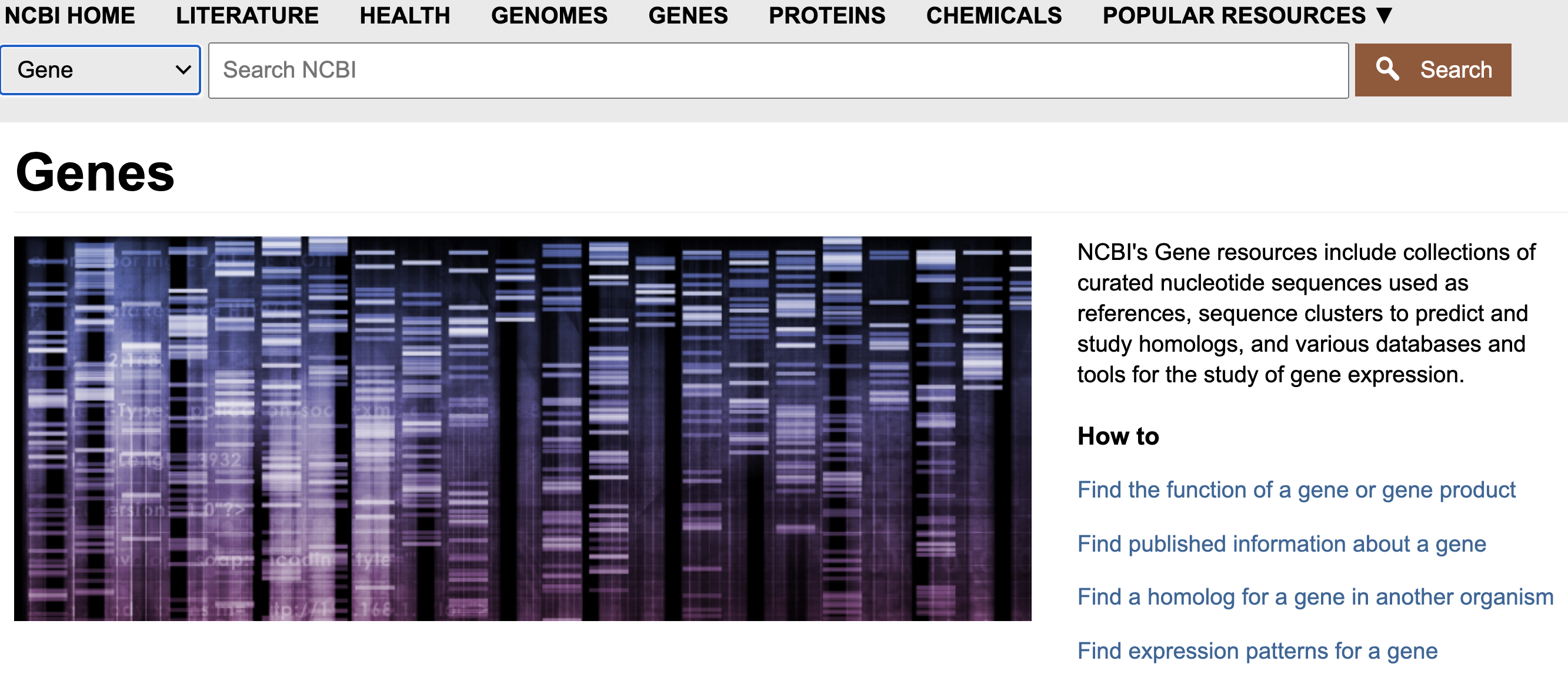Annotations
Mikhail Dozmorov
Virginia Commonwealth University
03-01-2021
Gene annotations
Gene identifiers
Gene
- Ensembl: ENSG00000139618
- Entrez Gene: 675
- Unigene: Hs.34012
RNA transcript
- GenBank: BC026160.1
- RefSeq: NM_000059
- Ensembl: ENST00000380152
ID cross-mapping
There are many IDs
Software tools recognize only a handful
Humans better recognize gene names
ID challenges
Avoid errors: map IDs correctly
- Beware of 1-to-many mappings
Gene name ambiguity – not a good ID
- e.g. BMFS5, LFS1, TRP53, p53
- Better to use the standard gene symbol, not aliases: TP53
Excel error-introduction
- OCT4 is changed to October-4 (open file/paste as text)
Problems reaching 100% cross-mapping
- E.g. due to version issues
- Use multiple sources to increase coverage
Reference Sequences (RefSeq)
Reference standard
- Eukaryotes: genomic, transcript, protein sequences, derived from:
- Computation
- Manual curation of submitted data
- Collaboration with other experts
- Eukaryotes: genomic, transcript, protein sequences, derived from:
69,000 organisms
7000 viruses, >40,000 prokaryotes, >10,000 eukaryotes
O'Leary, Nuala A., Mathew W. Wright, J. Rodney Brister, Stacy Ciufo, Diana Haddad, Rich McVeigh, Bhanu Rajput et al. "Reference sequence (RefSeq) database at NCBI: current status, taxonomic expansion, and functional annotation." Nucleic acids research, (2016)
RefSeq Accession Prefixes
NM_ = mRNA (experimentally supported)
XM_ = mRNA (predicted model)
NP_ = protein (experimentally supported)
XP_ = protein (predicted model)
NC_ = genomic/chromosome
NG_ = incomplete genomic assembly
https://www.ncbi.nlm.nih.gov/books/NBK21091/table/ch18.T.refseq_accession_numbers_and_mole/?report=objectonly
HUGO Gene Nomenclature Committee (HGNC) Gene Names
This resource lists gene name synonyms, which is useful if you are conducting a comprehensive literature search and need to find articles about a gene that may have been called other names in the past.

ID conversion helpers
clusterProfiler::bitr()function - Biological Id TranslatoRHGNChelperR package to correct invalid Human/Mouse Gene SymbolsannotablesR package by Stephen Turner, annotating/converting Gene IDsAnnotationDbiR package for manipulation of SQLite-based annotationsbiomaRtR package - Interface to BioMart databases (i.e. Ensembl)
http://yulab-smu.top/clusterProfiler-book/chapter14.html#bitr
https://CRAN.R-project.org/package=HGNChelper
https://github.com/stephenturner/annotables
BiomaRt basics
Biomart R package, biomaRt, workflow:
- Discover and select an organism-specific mart and dataset
- Select filters, which IDs to convert from
- Select attributes, which IDs to convert to
Run the query
For genomic coordinates, use database that corresponds to genome assembly version you are interested in
Biomart has a web interface, operating on the same principles
BiomaRt
The getBM() function has three arguments that need to be introduced: filters, attributes and values.
Filters define a restriction on the query. Tell BiomaRt what kind of IDs do you have, so it will look for it. The
listFilters()function shows you all available filters in the selected datasetAttributes define the values we are interested in to retrieve. Which IDs associated with your IDs you want to get. The
listAttributes()function displays all available attributes in the selected datasetValues is a vector of IDs you want to convert
Annotation packages
Annotation packages
Bioconductor provides extensive access to 'annotation' resources, see the "AnnotationData" biocViews hierarchy.
AnnotationDBI- is a cornerstone of "AnnotationData" packages, provides user interface and database connection code for annotation data packages using SQLite data storage.
http://bioconductor.org/packages/AnnotationDbi
https://bioconductor.org/packages/release/BiocViews.html#___AnnotationData
Annotation packages
org packages (e.g.,
org.Hs.eg.db) contain maps between different gene identifiers, e.g., ENTREZ and SYMBOL. The basic interface to these packages is described on the help page?selectTxDb packages (e.g.,
TxDb.Hsapiens.UCSC.hg38.knownGene) contain gene models (exon coordinates, exon / transcript relationships, etc) derived from common sources such as the hg38knownGenetrack of the UCSC genome browser. These packages can be queried, e.g., as described on the?exonsBypage to retrieve all exons grouped by gene or transcript.
https://bioconductor.org/packages/org.Hs.eg.db
https://bioconductor.org/packages/TxDb.Hsapiens.UCSC.hg38.knownGene
Annotation packages
EnsDb packages and databases (e.g.
EnsDb.Hsapiens.v86) provide, similar to TxDb packages, gene models, but also protein annotations (protein sequences and protein domains within these) and additional annotation columns such as"gene_biotype"or"tx_biotype"defining the biotype of the features (e.g. lincRNA, protein_coding, miRNA etc).EnsDbdatabases are designed for Ensembl annotations and contain annotations for all genes (protein coding and non-coding) for a specific Ensembl release.BSgenome packages (e.g.,
BSgenome.Hsapiens.UCSC.hg19) contain whole genomes of model organisms. Seeavailable.genomes()for pre-packaged genomes.
Annotation methods
Annotation packages usually contain an object named after the package itself. These objects are collectively called
AnnotationDbobjects with more specific classes namedOrgDb,ChipDborTranscriptDbobjects.Methods that can be applied to these objects include
cols(),keys(),keytypes()andselect().
Annotation methods
| Category | Function | Description |
|---|---|---|
| Discover | columns() |
List the kinds of columns that can be returned |
keytypes() |
List columns that can be used as keys | |
keys() |
List values that can be expected for a given keytype | |
select() |
Retrieve annotations matching keys, keytype and columns |
Annotation methods
| Category | Function | Description |
|---|---|---|
| Manipulate | setdiff(), union(), intersect() |
Operations on sets |
duplicated(), unique() |
Mark or remove duplicates | |
%in%, match() |
Find matches | |
any(), all() |
Are any TRUE? Are all? |
|
merge() |
Combine two different data.frames based on shared keys |
Annotation methods
| Category | Function | Description |
|---|---|---|
| GRanges* | transcripts(), exons(), cds() |
Features (transcripts, exons, coding sequence) as GRanges. |
transcriptsBy() , exonsBy() |
Features group by gene, transcript, etc., as GRangesList. |
|
cdsBy() |
KEGG
KEGG: Kyoto Encyclopedia of Genes and Genomes
KEGG API R package,
KEGGREST- Essential operations outlined in the vignette
http://www.genome.jp/kegg/pathway.html
https://bioconductor.org/packages/KEGGREST
http://bioconductor.org/packages/release/bioc/vignettes/KEGGREST/inst/doc/KEGGREST-vignette.html
AnnotationHub
AnnotationHubpackage - curated database of large-scale whole-genome resources, e.g., regulatory elements from the Roadmap Epigenomics project, Ensembl GTF and FASTA files for model and other organisms. Examples of use include:- Easily access and import Roadmap Epigenomics files.
liftOvergenomic range-based annotations from one coordinate system (e.g,hg19) to another (e.g.,GRCh38).- Create
TranscriptDbandBSgenome-style annotation resources 'on the fly' for a diverse set of organisms. - Programmatically access the genomic coordiantes of clinically relevant variants cataloged in dbSNP.
Related packages:
ExperimentHub- curated data sets
https://bioconductor.org/packages/AnnotationHub

